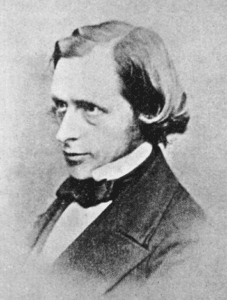Excerpt from: “High blood pressure and the kidney: The forgotten contribution of William Senhouse Kirkes” by J. Stewart Cameron and Jackie Hicks
 |
The realization of the key role for raised intra-arterial pressure as a pathogenetic agent in hypertension is usually credited to Ludwig Traube. But Traube in his writings gives credit for the idea to a little-known English doctor, William Senhouse Kirkes (1822–1864). Kirkes’ main interest was in cardiology and vascular disease, and he gave the first account of embolism from vegetations in infective endocarditis in 1852. Three years later, he published a study of apoplexy in Bright’s disease, in which he pointed clearly to the role of raised intra-arterial tension in the causation of arterial disease, a point that had eluded Bright, Johnson, and other contemporaries. Kirkes died at the age of only 42 while working on a book summarizing his work on cardiology and renal disease, and the neglect of his contribution probably resulted from his early death. We have traced his life history from the few available records; as a boy, Kirkes was apprenticed to become a surgeon and only later trained as a physician. We place his contributions within the setting of the development during the 19th century of understanding of the relationship between the kidney, vascular disease, and high blood pressure.
Fall 2018 | Sections | Nephrology & Hypertension

Leave a Reply